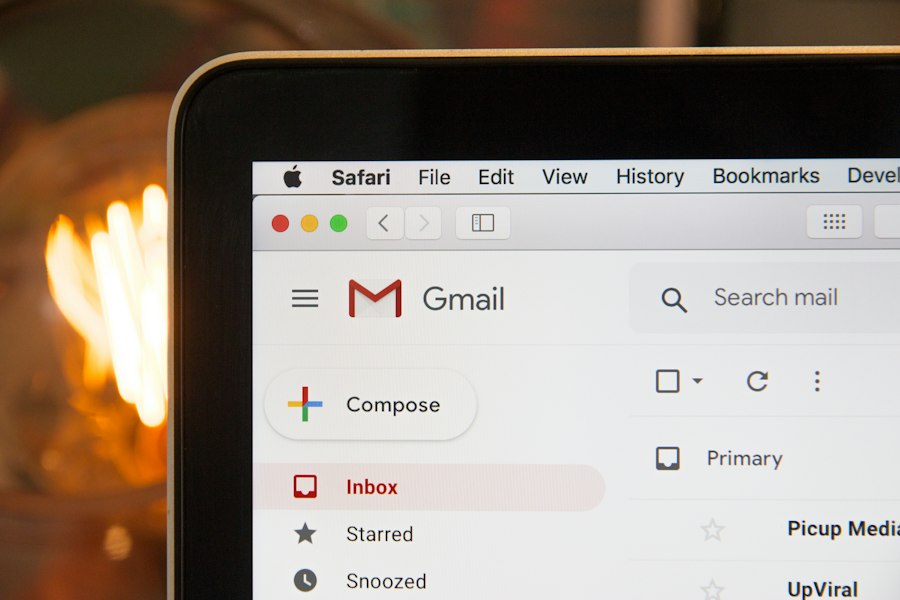Customer relationships play a crucial role in the success of any business. Building strong relationships with customers not only leads to increased customer loyalty and retention, but it also helps in attracting new customers through positive word-of-mouth. In today’s digital age, where technology has transformed the way businesses interact with their customers, it is essential to understand the impact of technology on customer relationships.
Technology has undoubtedly made it easier for businesses to automate various aspects of customer engagement. However, relying solely on automation is not enough to build strong customer relationships. While automation can streamline processes and save time, it lacks the personal touch that customers crave. This is where personalization comes into play.
Key Takeaways
- Customer relationships are crucial for business success
- Automation alone is not enough, personalization is key
- Data helps build strong customer relationships
- Compelling content is important for effective email marketing
- Segmentation strategies help target the right audience
Why Automation is Not Enough: The Need for Personalization
While automation has its benefits, it has limitations when it comes to building strong customer relationships. Automation can make interactions with customers feel impersonal and robotic. Customers want to feel valued and appreciated, and automation alone cannot provide that level of personalization.
Personalization, on the other hand, allows businesses to tailor their interactions with customers based on their preferences, behaviors, and needs. By personalizing customer engagement, businesses can create a more meaningful and memorable experience for their customers. Personalization can be achieved through various means, such as personalized emails, targeted content, and customized offers.
Understanding Your Customers: Using Data to Build Strong Relationships
To personalize customer engagement effectively, businesses need to understand their customers on a deeper level. This is where data comes into play. Data provides valuable insights into customer behavior, preferences, and needs, allowing businesses to make informed decisions and tailor their strategies accordingly.
Collecting and analyzing customer data can be done through various methods. One common method is through the use of customer relationship management (CRM) software, which allows businesses to track and manage customer interactions and data. Other methods include surveys, feedback forms, and social media listening. Once the data is collected, it can be analyzed to identify patterns, trends, and opportunities for personalization.
Crafting Compelling Content: Tips for Effective Email Marketing
Email marketing is a powerful tool for building customer relationships. It allows businesses to communicate directly with their customers and deliver personalized content. However, to be effective, email content needs to be engaging and compelling.
The role of email marketing in building customer relationships is to provide value to customers. This can be done through informative content, exclusive offers, and personalized recommendations. It is important to understand the needs and interests of your target audience and tailor your email content accordingly. Additionally, using eye-catching subject lines, personalizing the email with the recipient’s name, and including a clear call-to-action can help increase engagement and drive conversions.
Segmentation Strategies: How to Target the Right Audience
Segmentation is a crucial strategy in customer engagement as it allows businesses to target the right audience with the right message. By dividing your customer base into smaller segments based on demographics, behaviors, or preferences, you can create more personalized and relevant content for each segment.
The benefits of audience segmentation are numerous. It allows businesses to deliver targeted messages that resonate with specific groups of customers, increasing the chances of engagement and conversion. It also helps in optimizing marketing efforts by focusing resources on the most valuable segments.
To segment your audience effectively, start by collecting relevant data about your customers. This can include demographic information, purchase history, browsing behavior, or any other data that is relevant to your business. Once you have collected the data, analyze it to identify common characteristics or patterns that can be used for segmentation. Finally, create targeted content or offers for each segment based on their unique needs and preferences.
Nurturing Leads: The Power of Drip Campaigns

Lead nurturing is an essential part of building strong customer relationships. Drip campaigns, also known as automated email campaigns, are a powerful tool for nurturing leads and guiding them through the customer journey.
The benefits of drip campaigns in lead nurturing are numerous. They allow businesses to stay top-of-mind with their leads by delivering relevant and timely content. Drip campaigns can be used to educate leads about your products or services, provide valuable information, or offer exclusive promotions. By nurturing leads through a series of automated emails, businesses can build trust and credibility, increasing the chances of conversion.
To create effective drip campaigns, start by mapping out the customer journey and identifying key touchpoints where automated emails can be sent. Each email in the drip campaign should have a specific goal and provide value to the recipient. It is important to segment your leads based on their stage in the customer journey and deliver content that is relevant to their needs and interests.
Building Loyalty: Reward Programs and Customer Retention
Building customer loyalty is crucial for long-term business success. One effective way to build loyalty is through reward programs. Reward programs incentivize customers to continue doing business with you by offering exclusive benefits or discounts.
The role of loyalty programs in customer retention is to create a sense of value and appreciation for customers. By offering rewards for their loyalty, businesses can make customers feel special and encourage repeat purchases. Reward programs also provide an opportunity for businesses to collect valuable data about their customers, such as purchase history or preferences, which can be used for personalization.
To create effective reward programs, start by understanding your customers’ needs and preferences. What kind of rewards would they find valuable? What incentives would encourage them to continue doing business with you? Once you have identified the rewards that resonate with your customers, design a program that is easy to understand and participate in. Make sure to communicate the benefits of the program clearly and regularly engage with your customers to keep them informed about their progress and rewards.
Integrating Social Media: Maximizing Your Reach
Social media has become an integral part of our daily lives, and it has also transformed the way businesses interact with their customers. Integrating social media into your customer relationship strategy can help maximize your reach and engagement.
The benefits of social media in customer engagement are numerous. It allows businesses to reach a wider audience, engage with customers in real-time, and build brand awareness. Social media platforms also provide valuable insights into customer behavior and preferences, which can be used for personalization.
To integrate social media into your customer relationship strategy, start by identifying the platforms that are most relevant to your target audience. Create engaging and shareable content that resonates with your audience and encourages them to interact with your brand. Use social media listening tools to monitor conversations about your brand and respond promptly to customer inquiries or feedback. Finally, leverage social media advertising to reach a wider audience and drive conversions.
Measuring Success: Key Metrics for Evaluating Your Strategy
Measuring the success of your customer relationship strategy is crucial for identifying areas of improvement and optimizing your efforts. There are several key metrics that can be used to evaluate the effectiveness of your strategy.
One important metric is customer satisfaction. This can be measured through surveys or feedback forms that ask customers about their experience with your brand. Another important metric is customer retention rate, which measures the percentage of customers who continue doing business with you over a specific period of time. Other metrics include customer lifetime value, which measures the total revenue generated by a customer over their lifetime, and engagement metrics such as open rates or click-through rates.
To measure these metrics effectively, it is important to have a system in place for collecting and analyzing data. Use analytics tools to track customer interactions and behaviors, and regularly review the data to identify trends or patterns. Set specific goals for each metric and regularly monitor your progress towards those goals.
The Future of Customer Relationships with Mailchimp
Mailchimp is a powerful tool for building strong customer relationships. It provides businesses with the tools and resources they need to automate and personalize their customer engagement efforts. With features such as email marketing, audience segmentation, and analytics, Mailchimp allows businesses to create targeted and effective campaigns that resonate with their customers.
The future of customer relationships in business is likely to be even more focused on personalization and automation. As technology continues to advance, businesses will have access to more data and tools that can help them understand their customers better and deliver more personalized experiences. By leveraging the power of technology and platforms like Mailchimp, businesses can build strong and lasting relationships with their customers, leading to increased loyalty, retention, and growth.
If you’re interested in exploring more about building strong customer relationships, you should definitely check out this insightful article from Martech titled “The Power of Personalization: How to Connect with Customers on a Deeper Level.” This article delves into the importance of personalization in today’s digital landscape and provides practical tips on how to leverage data and technology to create meaningful connections with your customers. Discover how personalization can enhance your marketing efforts and drive customer loyalty by clicking here.
FAQs
What is Mailchimp?
Mailchimp is an all-in-one marketing platform that helps businesses of all sizes to communicate with their customers and grow their audience.
What is the article “Beyond Automation: Building Strong Customer Relationships with Mailchimp” about?
The article is about how businesses can use Mailchimp to build strong customer relationships beyond just automated emails.
What are some features of Mailchimp?
Mailchimp offers a variety of features including email marketing, social media advertising, landing pages, postcards, and more.
How can Mailchimp help businesses build strong customer relationships?
Mailchimp can help businesses build strong customer relationships by providing tools for personalized communication, segmentation, and targeted messaging.
What is segmentation in Mailchimp?
Segmentation in Mailchimp is the process of dividing your audience into smaller groups based on specific criteria such as location, interests, or behavior.
What is targeted messaging in Mailchimp?
Targeted messaging in Mailchimp is the process of sending personalized messages to specific segments of your audience based on their interests, behavior, or other criteria.
Can Mailchimp integrate with other platforms?
Yes, Mailchimp can integrate with a variety of other platforms including e-commerce platforms, CRMs, and social media platforms.
Is Mailchimp easy to use?
Yes, Mailchimp is designed to be user-friendly and easy to use for businesses of all sizes. They offer a variety of resources and support to help users get started.

